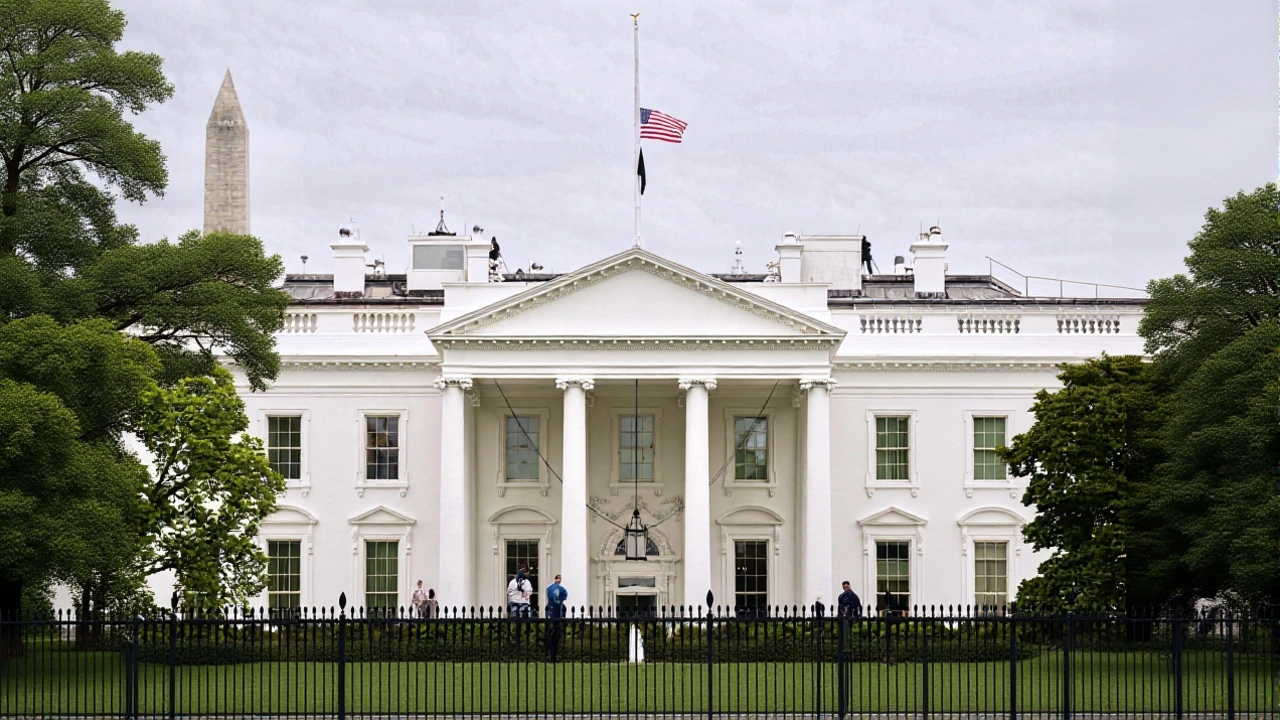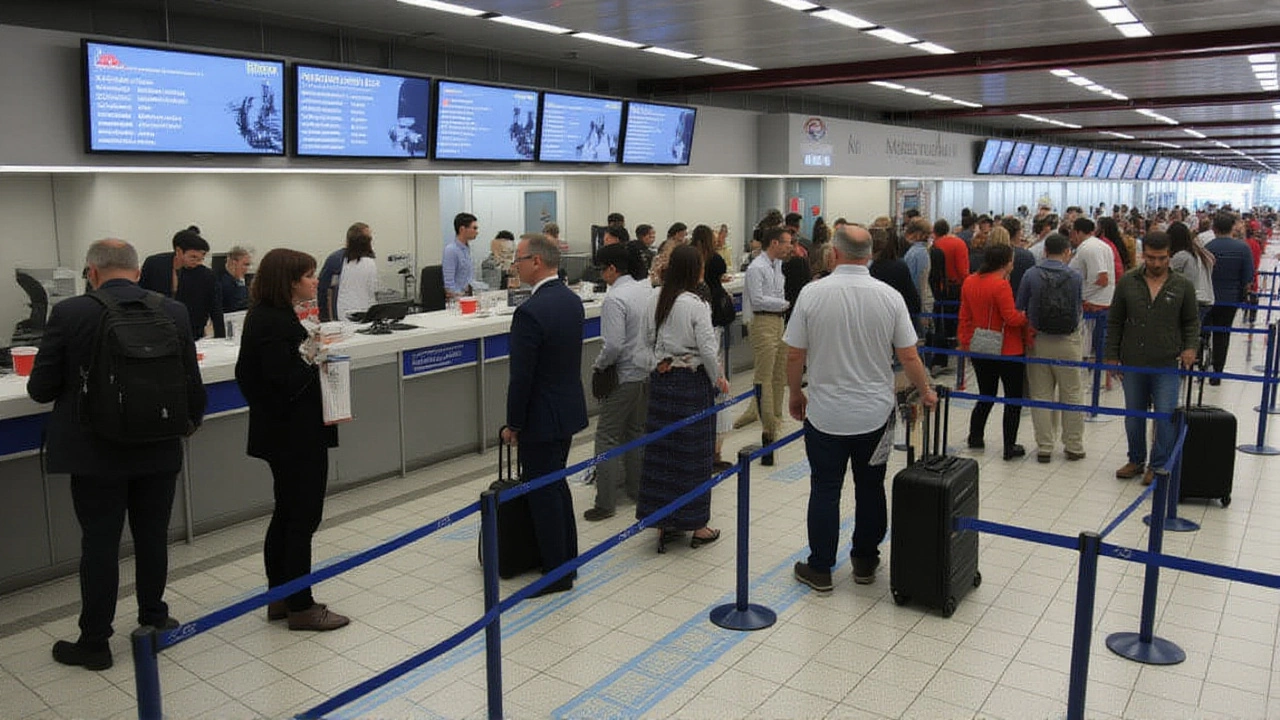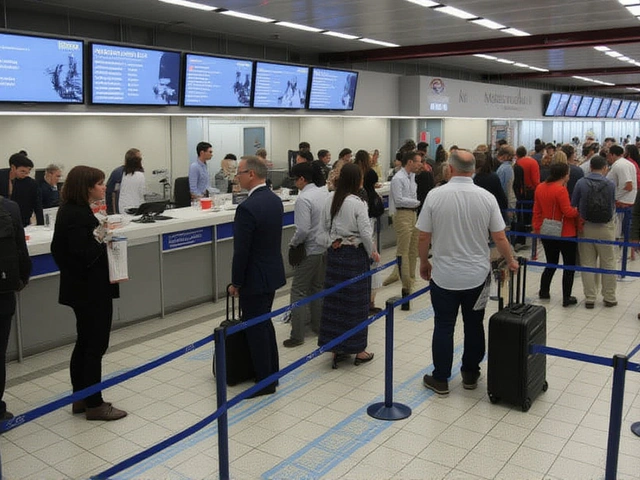When United States rolled out a near‑doubling of its Electronic System for Travel Authorization (ESTA) charge on September 30, 2025, the travel world took notice. The fee jumped from $21 to $40 – a 90 % hike that will touch roughly 40 million annual visitors from the Visa Waiver Program (VWP). The increase landed at the tail‑end of fiscal year 2025, just as the Department of Homeland Security’s (DHS) U.S. Customs and Border Protection (CBP) rolled out a bundle of new fees under a budget‑reconciliation bill.
Background on the ESTA Program
The ESTA system, launched in 2009, lets citizens of 40 VWP nations zip into the United States for tourism or business without a traditional visa. An approved ESTA is valid for two years or until the traveller’s passport expires – whichever comes first – and permits stays of up to 90 days per trip. Operators of signatory airlines and business‑jet carriers are responsible for submitting each traveller’s Advance Passenger Information via the carrier’s system, which CBP then checks against the ESTA database.
Since its inception, the programme has generated modest revenue, but the surge in applications – now estimated at 40 million per year – gave Congress a chance to tap a larger pot. That opportunity arrived with the H.R. 1 budget reconciliation legislation, passed in July 2025. The bill, packaged as part of the Trump administration’s One Big Beautiful Bill, bundled a slew of travel‑related initiatives, from funding the Treasury to earmarking money for U.S. tourism promotion.
Details of the September 2025 Fee Increase
Effective September 30, 2025, CBP lifted the ESTA application fee from $21 to $40. The hike applies to all new submissions, while any applications filed before that date retain the old rate. In tandem, two other fees debuted:
- EVUS fee: Chinese nationals holding a 10‑year B1/B2 visa now pay $30 for the Electronic Visa Update System, up from a historic $0.
- I‑94 land border fee: A $24 surcharge adds to the existing $6 charge, bringing the total to $30 for anyone entering the United States via a land port of entry.
All three fees – ESTA, EVUS, and land I‑94 – will be indexed to inflation starting fiscal year 2026, with adjustments tied to the Consumer Price Index each year. Unpaid applications lingering in the system after September 30 will also be subject to the new rates.
Reactions from Industry and Travelers
"The jump is a wake‑up call for operators to double‑check their compliance responsibilities," said Laura Everington, director of international operations and regulations at National Business Aviation Association. Everington noted that signatory carriers must keep each traveller’s ESTA current, especially now that the cost barrier is higher.
Frequent flyers from Canada, the United Kingdom and other VWP nations expressed mixed feelings. Some see the fee as a reasonable contribution to U.S. border security, while budget‑conscious tourists grumbled about the unexpected price tag, especially when the fee is charged per traveller rather than per family.
Chinese business travelers, who have relied on a free EVUS update for years, faced the steepest shock. Industry observers predict a short‑term dip in repeat visits until the market adjusts to the new $30 baseline.
Financial and Policy Implications
The $40 charge translates to an extra $19 per traveller – a potential $760 million boost in annual revenue if all 40 million visitors continue to apply. A portion of that windfall is earmarked for the U.S. Travel Promotion Office, tasked with marketing American destinations abroad.
Congressional supporters argue the increase helps offset the rising costs of CBP’s technology upgrades, including the expanding Advance Passenger Information System. Critics, however, worry the higher fees could deter short‑term tourism, a sector that contributed roughly $120 billion to the U.S. economy in 2023.
From a policy standpoint, indexing the fees to inflation removes the need for future legislative spikes, turning a one‑off hike into an ongoing revenue stream. That move aligns with the broader budget‑reconciliation strategy of the Trump administration, which sought to streamline funding mechanisms.
Looking Ahead: Inflation Indexing and Future Changes
Starting fiscal year 2026, CBP will adjust the ESTA, EVUS and land I‑94 fees each year based on the CPI. If inflation runs at 2 % – the Federal Reserve’s target – travellers could see the ESTA fee creep up to roughly $42 by 2028.
Airlines and business‑jet operators are already revising their compliance checklists. Signatory carriers must now verify that each passenger’s ESTA is not only approved but also paid at the current rate before filing the Advance Passenger Information. Failure to do so could result in denied boarding or fines for the carrier.
Travel agencies advising VWP clients are updating their pricing tools to reflect the new cost structure. Some are even bundling the ESTA fee into the overall ticket price to avoid surprise charges at checkout.
Overall, the fee hike marks the most significant shift in U.S. travel‑authorization economics in over a decade. Whether it will reshape travel patterns remains to be seen, but the immediate impact on budgets – for both travellers and airlines – is already tangible.

Frequently Asked Questions
How will the higher ESTA fee affect travelers from Visa Waiver Program countries?
The fee jump to $40 adds $19 to each new application. For frequent flyers who apply multiple times a year, the cost can quickly add up. However, because the ESTA remains valid for two years, many travellers will only pay the new rate once per validity period, softening the long‑term impact.
What is EVUS and why is its fee increasing?
EVUS (Electronic Visa Update System) lets Chinese nationals with a 10‑year B1/B2 visa keep their biographic information current. The $30 charge, up from zero, was introduced to offset administrative costs and align Chinese visitor fees with those of other visa‑holding nationals.
How does the new I‑94 land border fee work?
When entering the United States by car, truck or bus, travelers now pay a $30 total fee (the prior $6 plus a $24 surcharge). The charge is collected electronically at the point of entry and does not apply to air or sea arrivals.
When will the fees be adjusted for inflation?
Starting fiscal year 2026, CBP will tie each fee to the Consumer Price Index. If CPI rises 2 % annually, the $40 ESTA could reach $42 by 2028, and the EVUS and land I‑94 fees will follow a similar upward path.
What should airlines and signatory carriers do to stay compliant?
Carriers must verify that each passenger’s ESTA is approved and paid at the current $40 rate before submitting Advance Passenger Information. They should also update their booking systems to display the fee upfront and keep records of any unpaid applications for potential retroactive collection.



Comments
The $40 ESTA surcharge fundamentally re‑engineers the cost‑structure for Visa Waiver travelers and triggers a cascade of compliance friction points across airline operational workflows. By integrating this fee into the APIS submission pipeline, carriers will need to augment their revenue‑recognition modules to handle real‑time validation. Moreover, the ancillary EVUS and I‑94 land fees introduce a multi‑tiered tariff matrix that will likely necessitate API extensions for point‑of‑sale systems. In practice, this translates to a higher computational overhead for each boarding pass generation and increased data‑exchange bandwidth between airlines and CBP. For passenger‑facing staff, the up‑sell narrative now has to incorporate explicit fee breakdowns to maintain transparency standards. From a financial engineering perspective, indexing these levies to CPI embeds an inflation hedge directly into the travel ecosystem, thereby stabilizing forecasted cash flows for the Treasury.
The hike in the ESTA fee to $40 represents a significant shift in the cost landscape for travelers from Visa Waiver Program nations and it will have a ripple effect throughout the travel industry as airlines, booking platforms, and travel agencies alike adjust their pricing models to accommodate the new charge while also ensuring compliance with CBP's updated verification protocols that now require proof of fee payment before APIS submission many travelers may find the added expense burdensome especially frequent flyers who renew their ESTA more often than the two‑year validity period allows however the longer validity of the ESTA means that for the majority of tourists the increased fee will be a one‑time expense per trip rather than a recurring cost in the short term this could mitigate some of the pushback from budget‑conscious travelers the introduction of the $30 EVUS fee for Chinese nationals adds another layer of complexity to the visa update process and could potentially deter short‑term business trips from that demographic the land I‑94 surcharge of $24 on top of the existing $6 fee similarly raises the cost of overland travel by car or bus which might influence cross‑border commerce especially in high‑traffic regions like the US‑Canada and US‑Mexico border crossings from a policy standpoint indexing these fees to inflation ensures a predictable revenue stream for the government but it also means that future travelers may face incremental increases year over year which could cumulatively become a notable barrier to spontaneous travel decisions moreover airlines will need to invest in system upgrades to surface these fees transparently during the booking flow to avoid unexpected charges at checkout and to maintain compliance with carrier responsibilities for verifying current fee payment before transmitting passenger data to CBP the overall financial impact could be substantial with estimates suggesting an additional $760 million in annual revenue if the full volume of 40 million visitors continues to apply while a portion of those funds is earmarked for tourism promotion the net benefit to the broader economy may be offset by potential dips in visitor numbers if the higher cost dampens demand the long‑term effect will likely hinge on how travel agencies and airlines choose to bundle these fees into ticket prices and whether travelers perceive the added cost as a fair contribution to border security and infrastructure improvements
Wow, that $40 charge really shakes things up for VWP travelers!
I totally get the frustration; many folks just want a hassle‑free trip and now they have to budget extra cash for a fee they never saw coming.
Good news: airlines are already updating their checkout pages to include the $40 fee 😊 This should keep travelers from being surprised at the gate.
Let me guess – the government just discovered a way to siphon cash from unsuspecting tourists while pretending it’s for "security". Next thing you know, they’ll be taxing the air we breathe. If you think this $40 hike is about revenue, you’re missing the bigger picture: it’s a covert move to control movement, tighten surveillance, and feed the ever‑growing surveillance state. Don’t be fooled, it’s all part of the grand design.
From an ethical standpoint, inflating travel fees without clear justification borders on exploitation; individuals planning modest vacations may now find their budgets stretched thin, and the principle of equitable access to travel is being compromised.
According to the updated CBP guidelines, carriers must verify fee payment before submitting APIS data; failure to comply could result in penalties, underscoring the need for robust compliance frameworks within airline operations.
The new fees are just another trivial bureaucratic nuisance that serves no real purpose beyond fattening government coffers.
While the critique holds some merit, it overlooks the incremental costs associated with maintaining border security infrastructure and the administrative overhead of processing high‑volume travel authorizations.
Listen up! This fee hike is a blatant cash grab!!! Travelers need to brace themselves for even more charges in the future!!!
Oh great, another exciting reason to put my money where my passport already is-can't wait to see the new ATM line at the border.
The data suggests a correlation between fee increases and a short‑term dip in visitor numbers, yet the long‑term elasticity remains uncertain, indicating a potential misalignment of policy goals.
i think its kinda ok but also its a lot of money for a simple chk
Philosophically, one could argue that imposing monetary barriers to movement challenges the very notion of open borders, thereby prompting a deeper reflection on the ethics of state‑controlled mobility.
It's morally indefensible to make travel more expensive for ordinary people; this policy betrays a lack of compassion for those seeking cultural exchange.
Another fee, another headache-nothing changes.
Let's hope the extra revenue truly funds better traveler experiences 🌍✈️